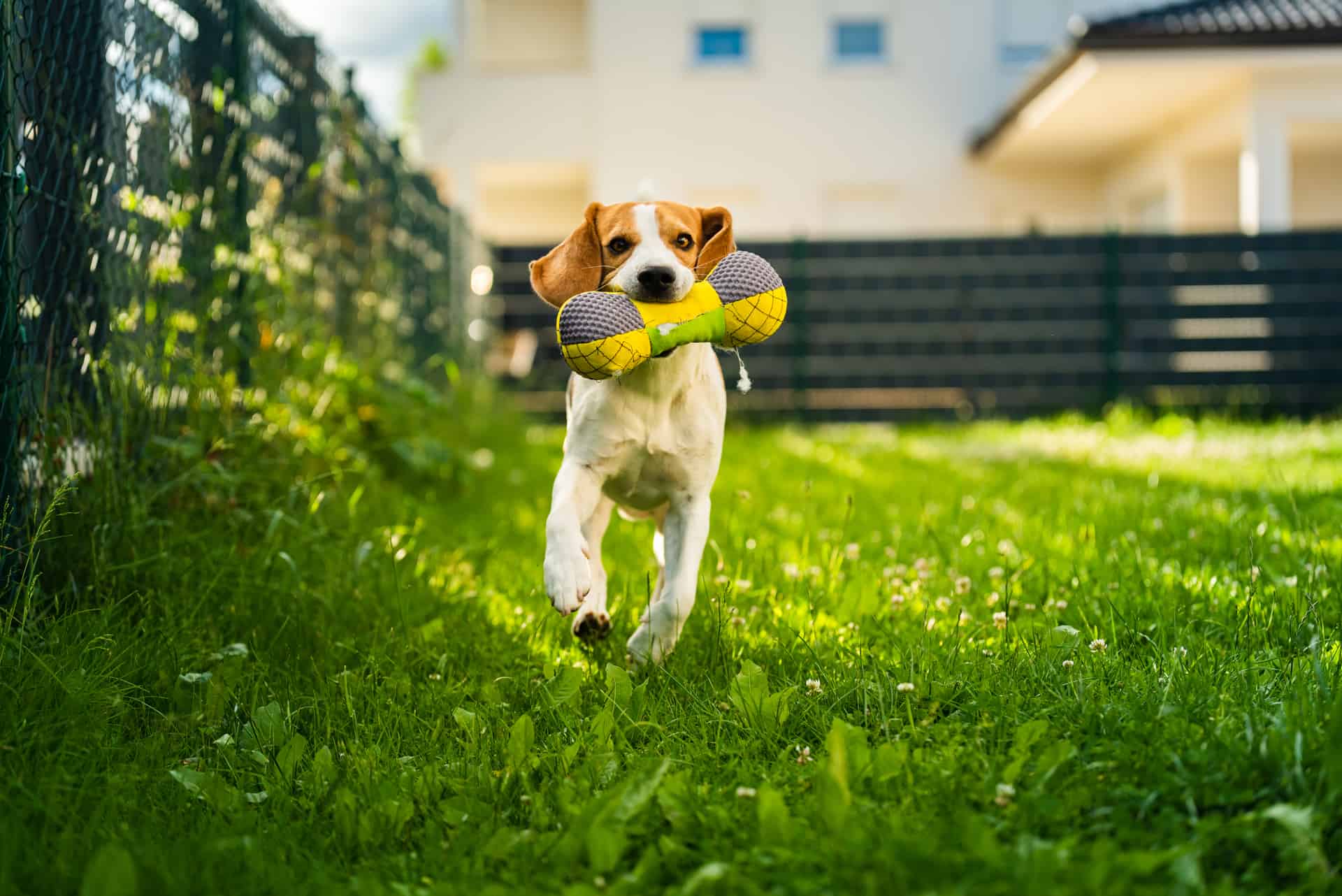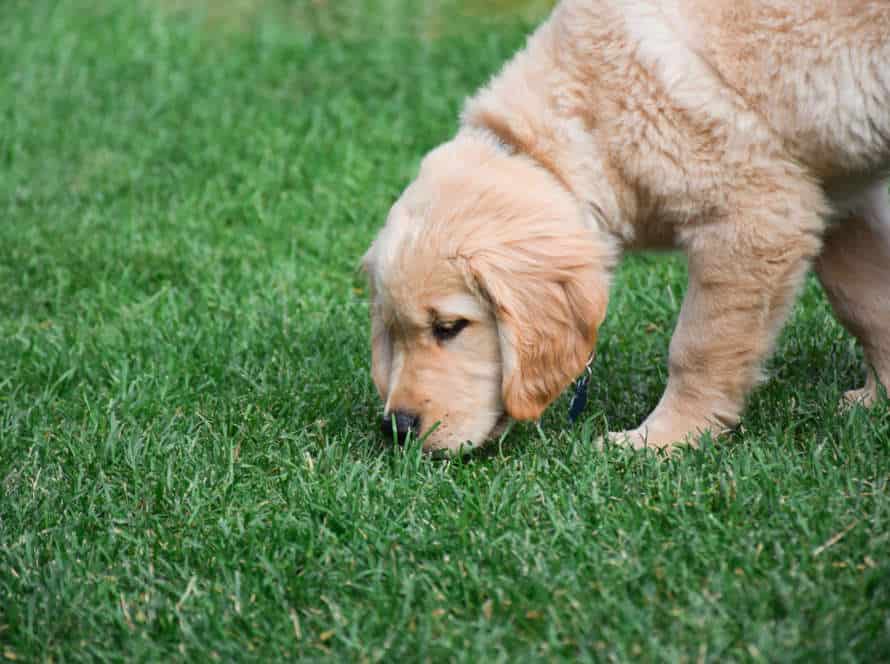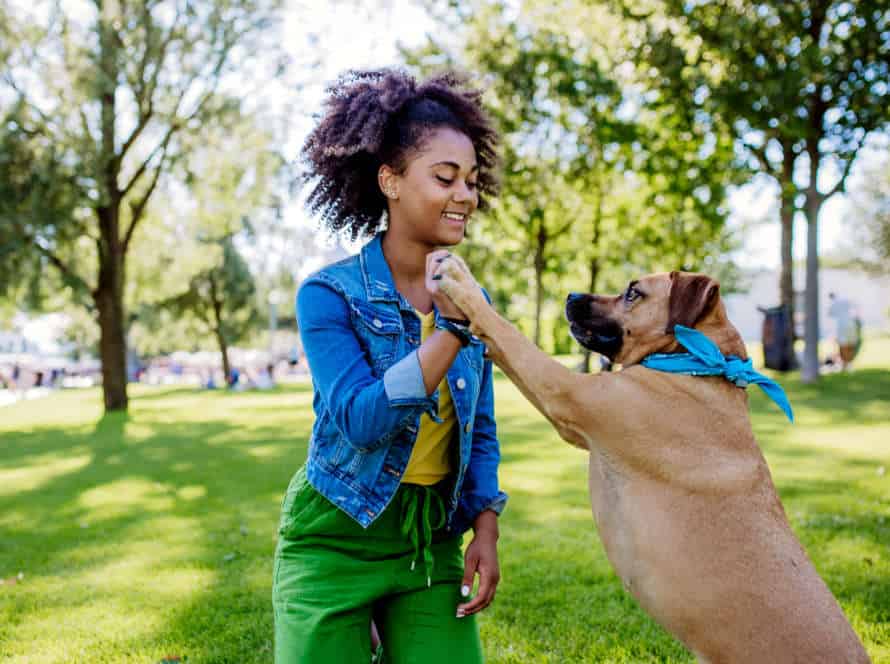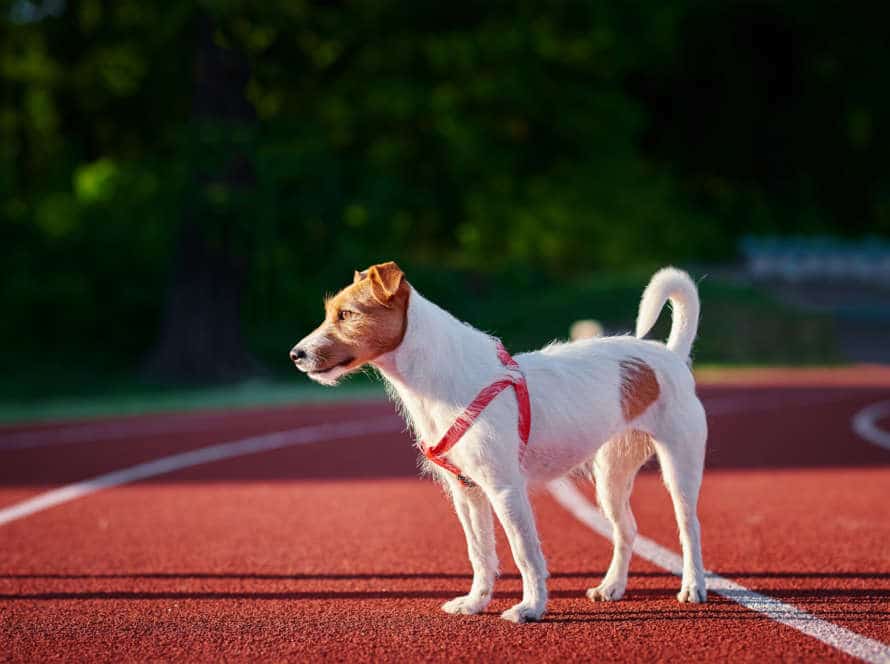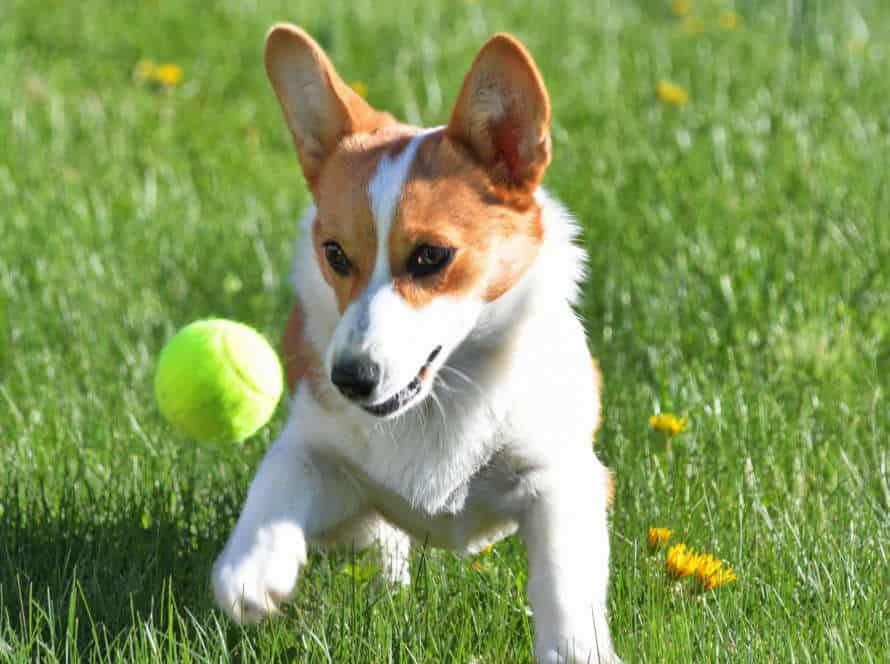The Benefits of Teaching Your Dog to Fetch
Training your pup to fetch can be a great game. But it can also help them in other ways. It can give your dog mental stimulation, create positive experiences with you, and strengthen the bond between the two of you. This article explains the advantages of teaching your dog to fetch and how to do it.
Physical Exercise and Health Benefits for Your Dog
Teaching your pup to fetch isn’t just fun – it has a bunch of advantages! Exercise? Check. Mental stimulation? Yes. Bonding? Absolutely. Behavioral training? You bet!
Exercise-wise, fetching is a great way for your furry friend to burn off energy and stay in shape. Plus, it boosts their stamina and helps with their cardiovascular health.
It’s also an awesome way to stimulate their brain and keep it active. Plus, playing fetch can help you and your pup bond – strengthening your relationship and promoting trust and love.
Teaching your dog to fetch is also a great way to teach them important skills like commands, obedience, and discipline.
Overall, the physical and health benefits of teaching your dog to fetch make it a great activity to add to their daily routine!
Mental Stimulation and Preventing Boredom
Teaching your pup to fetch is a beneficial game! Here are the perks:
- Mental Stimulation: It keeps your dog mentally engaged and prevents behavioural problems due to lack of stimulation. Problem-solving skills and mental sharpness are both improved.
- Physical Exercise: It’s good for their physical health, helping them maintain a healthy weight and improve their cardiovascular health.
- Bonding Time: It’s a great moment to build trust and communication between you and your pup.
- Obedience Training: It can be used as an obedience tool to teach your dog how to respond to commands.
Pro Tip: Use a soft, lightweight toy to prevent injury to your dog’s mouth and teeth.
Building a Stronger Bond with Your Dog
Playing fetch with your pup is not only fun, but also a great way to create a stronger bond. Here are some benefits:
- Physical exercise: Fetch is a great workout for your dog, keeping them fit and healthy.
- Mental stimulation: Fetch engages their mind and satisfies their natural instincts.
- Socialization: It’s a great way to teach them how to interact with people and other dogs.
- Training: An excellent way to teach obedience, discipline, and impulse control.
To get started, you only need a ball and a bit of patience. Remember, it’s about building a relationship with your pup. Pro Tip: Use positive reinforcement while playing fetch.
Steps to Teach Your Dog to Fetch
Fetching is awesome for bonding with your pup! It’s also a great way to get them moving and mentally stimulated. Teaching your dog to fetch is actually quite simple. We’ll give you the steps to do just that. Ready? Here we go!
- Start with a toy: Choose a toy that your dog finds interesting and can easily pick up in their mouth. Toss the toy a few feet away and encourage them to go get it.
- Encourage them to bring the toy back: Once your dog has the toy, encourage them to bring it back to you. You can use treats to coax them back if necessary.
- Teach the “drop it” command: When your dog brings the toy back, instruct them to drop it at your feet by saying “drop it.” Reward them when they do so.
- Increase the distance: As your dog gets better at bringing the toy back to you, increase the distance that you throw the toy. Always encourage them to bring it back to you.
- Vary the toys: Once your dog has mastered fetching one type of toy, introduce other toys to keep it interesting. You can also use different types of toys for different environments.
Choosing the Right Toys for Fetching
Toys for fetching come in various sizes and shapes. Choosing the right one for your pup can make a difference. Here are some tips:
- Take into account your pup’s size and breed. Smaller pups may prefer lighter toys, while bigger dogs require more durable ones.
- Pick a toy that your dog can easily carry and retrieve. Avoid toys that are too heavy or oddly shaped.
- Make sure the toy is made of safe, non-toxic materials. Avoid toys that can easily break or hurt your pup.
- Test various textures and shapes to see what your pup likes the most.
Pro Tip: When teaching your pup to fetch, use positive reinforcement and start with short distances. Gradually increase the throw length. With patience and practice, your pup can master fetching and enjoy the exercise and connection it provides.
Teaching Your Dog the “Fetch” Command
Training your pup to fetch isn’t just a game – it’s a helpful behavior! It can keep them active and their minds exercised, plus you’ll get to interact more and build the bond between you. Here’s what to do:
- Get a lightweight toy that’s easy for your pup to pick up.
- Call their name and use a happy voice to grab their attention.
- Toss the toy a short distance away.
- Eagerly urge them with phrases like ‘go get it’ or ‘fetch’.
- Say ‘bring it here’ when they grab it.
- Give them treats or praise when they bring it back.
- Increase the throwing distance, and practice in different places.
With patience and practice, your pup will learn ‘fetch’ and be entertained for hours!
Teaching Your Dog to Drop the Toy on Cue
Teaching your pup to let go of the toy on command is key for a good game of fetch with your furry pal. Here are the steps:
- Begin by playing tug-of-war with your pup and their favorite toy.
- When it’s time for them to release the toy, say “drop it” in a firm yet gentle voice.
- Praise them and give a treat when they drop the toy.
- Repeat, lengthening the amount of time before they drop it on cue.
- Practice in different spots and situations.
Practice and reinforcement will help your pup learn to drop the toy on cue, making fetch more fun for both you and your pet.
Troubleshooting Common Issues when Teaching Fetch
Teaching your pup to fetch can be very overwhelming. But with patience and consistency, it can be a fun game that both you and your doggy can enjoy. But many owners run into issues with teaching this game. Here are some of those issues and how to get around them:
Your Dog Doesn’t Want to Fetch
If your pup isn’t keen on playing fetch, don’t worry. Here are some common issues you may face when teaching your furry pal and how to solve them:
- No interest? Some dogs may not like fetch or may need to be trained. Give treats and praise when they interact with the toy. Then, gradually, throw it and call their name in a cheerful voice.
- Scared of the object? Introduce it slowly, and reward them for interacting with it.
- Distractions? Start in a quiet place with nothing else to look at. Then, introduce distractions gradually.
Troubleshoot these issues and turn fetch into a fun game you can both enjoy!
Your Dog Chews or Destroys the Toys Instead of Bringing Them Back
If your pup chews or destroys their toys instead of bringing them back when you’re playing fetch, it can be vexing. But, this is a usual issue when teaching fetch and can be simply solved by diagnosing common problems.
Here are some tips to teach your dog to fetch properly:
- Start with two toys – Show one toy to your dog and then throw it. When they bring it back or drop it close to you, say “good fetch” and hurl the second toy. Repeat until your dog gets the idea.
- Don’t chase your dog – If your dog runs away with the toy, don’t chase them. Instead, offer a treat or another toy and persuade them to drop the first toy.
- Keep away from toys that look like household items – Your dog may think toys that look like shoes or remotes are the real things.
- Employ a short leash – If your dog has a habit of running away or gnawing on the toy, use a short leash to keep them in check until they get the game.
- Educate “leave it” command – Using the command “leave it” when your dog attempts to chew the toy is essential to make them realize that the toy is for fetching only.
Pro tip: Celebrate each successful fetch with treats and rubs to fortify the learning and motivate your dog to keep playing.
Your Dog Won’t Release the Toy on Command
Teaching your pup to fetch is more than a game. It’s great for their mental and physical stimulation. But, sometimes, they won’t give the toy back! Here are some tips to help:
- Trade it for a treat. Give them a yummy treat like chicken or cheese for the toy. So, they’ll learn giving it up leads to something good.
- Practice ‘give’ apart from fetch. Hold a toy in one hand and a treat in the other. Say ‘give’ and offer the treat. Gradually move to practicing with the toy in their mouth.
- Use a second toy. Have an extra toy ready to distract them. Show it to them and encourage them to let go of the first.
These tips will help you teach your dog to give up the toy on command. Then, you can enjoy the game of fetch with them!
Advanced Fetch Training
Fetch is a beloved game of our furry friends! Not only is it great fun, but it can also be very helpful for your pup. Training a dog to fetch can give many boons, for example better obedience and extra brain & body stimulation. If your pup already knows how to fetch, you can go further with advanced fetch training. Here we’ll discuss a few methods to take fetch to the next level with your doggo!
Retrieving Specific Objects
Advanced fetch training can help your pup learn to fetch certain items, making the game more interesting and beneficial. Here’s how:
- Start off teaching your dog the basics like “fetch” and “drop”.
- Show them different objects, and give each one a unique name.
- Train your dog to know each name and only bring the one you ask for.
- Reward them with positive feedback and treats to encourage the behaviour.
- Once they have the hang of it, make it harder by hiding the objects and getting them to find them.
- Keep challenging them with new objects and add complexity to make Fetch training fun.
Fetching Over Obstacles or Water
Advanced fetch training requires athleticism, obedience, and coordination. To teach your pup this skill:
- Start with basic fetch training.
- Increase the distance your pup has to retrieve the object.
- Introduce obstacles, like cones or hurdles. Encourage your pup to jump or go around them to get the object.
- Practice near a shallow pool or pond. Use a floating toy for your pup to fetch. Increase the depth of the water as your pup grows more comfortable.
- Use positive reinforcement techniques, like treats and praise. Help your pup overcome any hesitations or fears.
- With time and practice, your pup will become more confident. They will master advanced fetch training!
Combining Fetch with Other Games and Activities
Fetch plus other games and activities? That’ll take your pup’s game to the next level! Mental AND physical stimulation? Yes! Here’re a few ideas:
- Agility Course: Set up a mini course in your backyard. After your pup jumps over a hurdle, throw the ball for them to catch.
- Swimming: If your pup loves the water, toss a floating ball for them to swim and retrieve.
- Hide and Seek: Hide the ball and encourage your pup to sniff it out. Then, play a game of fetch when they find it.
Mix up fetch with these activities or others for a more exciting, mentally stimulating experience.
Pro Tip: To prevent boredom and reinforce positive behaviors, incorporate novelty into your pup’s fetch routine.
Frequently Asked Questions
1. Why is it important to teach my dog to fetch?
Teaching your dog to fetch can have a number of benefits. Not only does it provide great exercise for your furry friend, but it can also strengthen your bond and communication with them, promote concentration and focus, and even improve your pooch’s mental well-being.
2. How do I train my dog to fetch?
Start by introducing your dog to the concept of fetching by offering a treat or toy, then gradually increase the distance you throw the object. Use positive reinforcement such as praise and treats to encourage your dog to return the object to you. Consistency is key when it comes to training your dog to fetch, so practice each day and be patient.
3. What kind of toys are best for fetching?
The best toys for fetching are typically those that are easy for your dog to hold and carry, but are also durable enough to withstand rough play. Tennis balls, frisbees, and soft plush toys are all great options. Be sure to choose toys that are appropriate for your dog’s size and chewing habits, and always supervise playtime to prevent choking or injury.
4. Can any breed of dog be trained to fetch?
While some breeds of dogs are more naturally inclined to fetching than others, any breed can be trained to fetch with enough patience and dedication. Different breeds may have different preferences when it comes to toys or methods of play, so it’s important to tailor your training approach to your dog’s specific needs and interests.
5. Are there any safety concerns associated with playing fetch?
While playing fetch can be a fun and safe activity for you and your dog, there are a few things to keep in mind to ensure the safety of both you and your furry companion. Always supervise playtime to prevent choking or injury, avoid playing near roads or other hazardous areas, and be aware of your dog’s limitations – some dogs may be prone to overheating, for example, and may need to take breaks during play.
6. What should I do if my dog doesn’t seem interested in fetching?
Every dog is unique, and some simply may not have a strong interest in fetching. If your dog doesn’t seem to enjoy playing fetch, don’t force the issue – instead, look for other activities or games that may better suit their personality and interests. Alternatively, it may be worth consulting with a professional dog trainer to get some tips on how to motivate your furry friend to engage in playtime.

